PTPN2
-
Official Full Name
protein tyrosine phosphatase, non-receptor type 2 -
Overview
The protein encoded by this gene is a member of the protein tyrosine phosphatase (PTP) family. Members of the PTP family share a highly conserved catalytic motif, which is essential for the catalytic activity. PTPs are known to be signaling molecules that regulate a variety of cellular processes including cell growth, differentiation, mitotic cycle, and oncogenic transformation. Epidermal growth factor receptor and the adaptor protein Shc were reported to be substrates of this PTP, which suggested the roles in growth factor mediated cell signaling. Multiple alternatively spliced transcript variants encoding different isoforms have been found. Two highly related but distinctly processed pseudogenes that localize to chromosomes 1 and 13, respectively, have been reported. [provided by RefSeq, May 2011] -
Synonyms
PTPN2;protein tyrosine phosphatase, non-receptor type 2;PTN2;PTPT;TCPTP;TC-PTP;TCELLPTP;tyrosine-protein phosphatase non-receptor type 2;T-cell protein tyrosine phosphatase
Recombinant Proteins
- Human
- Mouse
- Chicken
- Rat
- E.coli
- Insect Cells
- Mammalian Cells
- HEK293
- GST
- His
- T7
- Non
- DDK
- Myc
- Avi
- Fc
Background
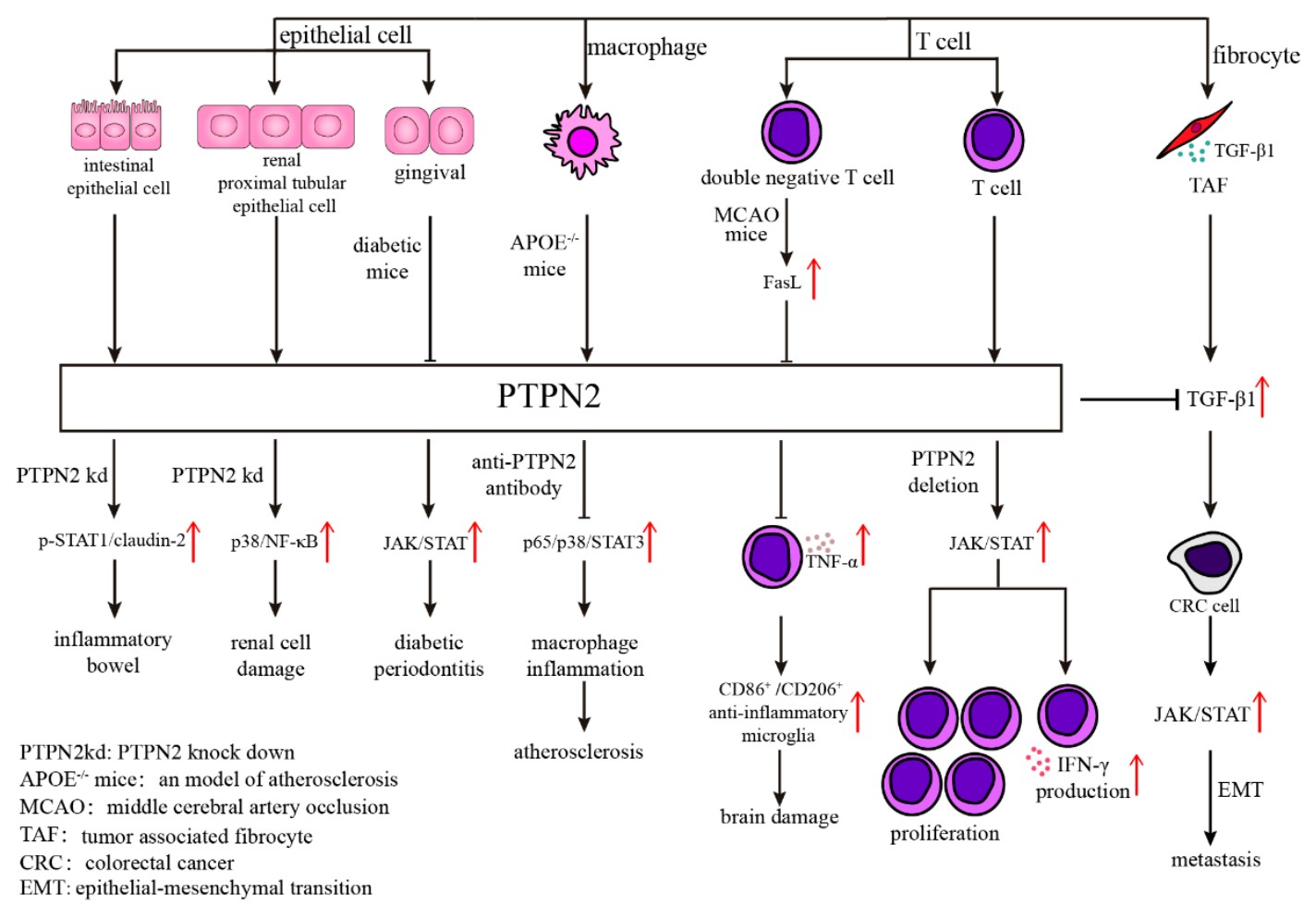
Fig1. Various mechanisms of PTPN2 in different kinds of cells. (Jiachun Song, 2022)
What is PTPN2 protein?
PTPN2 (protein tyrosine phosphatase non-receptor type 2) gene is a protein coding gene which situated on the short arm of chromosome 18 at locus 18p11. The protein encoded by this gene is a member of the protein tyrosine phosphatase (PTP) family. Members of the PTP family share a highly conserved catalytic motif, which is essential for the catalytic activity. PTPs are known to be signaling molecules that regulate a variety of cellular processes including cell growth, differentiation, mitotic cycle, and oncogenic transformation. Epidermal growth factor receptor and the adaptor protein Shc were reported to be substrates of this PTP, which suggested the roles in growth factor mediated cell signaling. The PTPN2 protein is consisted of 415 amino acids and its molecular mass is approximately 48.5 kDa.
What is the function of PTPN2 protein?
The PTPN2 protein, also known as tyrosine phosphatase nonreceptor type 2, is an intracellular tyrosine specific phosphatase. It is mainly involved in regulating many biological processes such as cell growth, differentiation, migration and apoptosis. PTPN2 regulates various signaling pathways, such as MAPK, PI3K/Akt, and JAK/STAT, by dephosphorylation of specific tyrosine residues, thereby affecting cell proliferation, survival, and function. In addition, PTPN2 is also involved in immune regulation, influencing the immune response by regulating the activity of T and B cells.
PTPN2 Related Signaling Pathway
PTPN2 is mainly involved in the regulation of cell proliferation, differentiation, migration and apoptosis. Through dephosphorylation, PTPN2 protein affects a variety of signaling pathways, such as Ras/MAPK, PI3K/Akt, JAK/STAT and Wnt/β-catenin, etc., thus playing a key role in cell growth, differentiation, migration and apoptosis. In addition, PTPN2 protein is also involved in various physiological and pathological processes such as immune response, inflammatory response and tumorigenesis.
PTPN2 Related Diseases
Due to its important role in regulating cell signaling, dysfunction of PTPN2 has been associated with a variety of diseases. For example, studies have found that PTPN2 is abnormally expressed in certain types of cancer, such as lung and breast cancer, suggesting that it may be involved in tumorigenesis and development. In addition, PTPN2 is also associated with diseases of the immune system, such as systemic lupus erythematosus (SLE), as well as some neurological diseases, such as neurodegenerative diseases. There is also evidence that PTPN2 may play a role in metabolic diseases such as diabetes and obesity.
Bioapplications of PTPN2
At present, research on small molecule inhibitors or activators targeting PTPN2 is ongoing with a view to developing novel drugs or therapies to treat related diseases. In addition, PTPN2 is also used as a biomarker to diagnose certain types of cancer or other diseases.
Case Study
Case study 1: Taylor M Triolo, 2022
Type 1 diabetes is a polygenic disease that results in an autoimmune response directed against insulin-producing beta cells. PTPN2 is a known high-risk type 1 diabetes associated gene expressed in both immune- and pancreatic beta cells, but how genes affect the development of autoimmune diabetes is largely unknown. The researchers employed CRISPR/Cas9 technology to generate a functional knockout of PTPN2 in human pluripotent stem cells (hPSC) followed by differentiating stem-cell-derived beta-like cells (sBC) and detailed phenotypical analyses. The differentiation efficiency of PTPN2 knockout (PTPN2 KO) sBC is comparable to wild-type (WT) control sBC. Global transcriptomics and protein assays revealed the increased expression of HLA Class I molecules in PTPN2 KO sBC at a steady state and upon exposure to proinflammatory culture conditions, indicating a potential for the increased immune recognition of human beta cells upon differential PTPN2 expression. sBC co-culture with autoreactive preproinsulin-reactive T cell transductants confirmed increased immune stimulations by PTPN2 KO sBC compared to WT sBC.
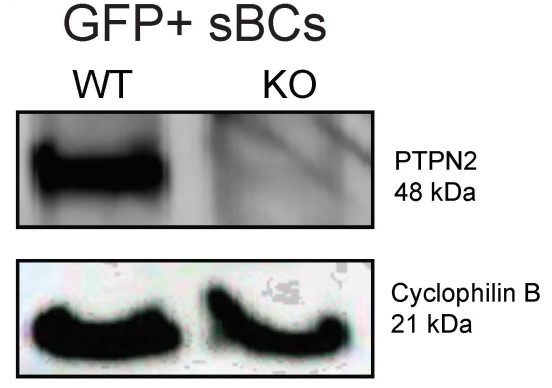
Fig1. Representative Western blot analysis for the PTPN2 protein or endogenous control protein Cyclophilin B of sorted day 23 GFP+ sBCs from WT and PTPN2 KO.
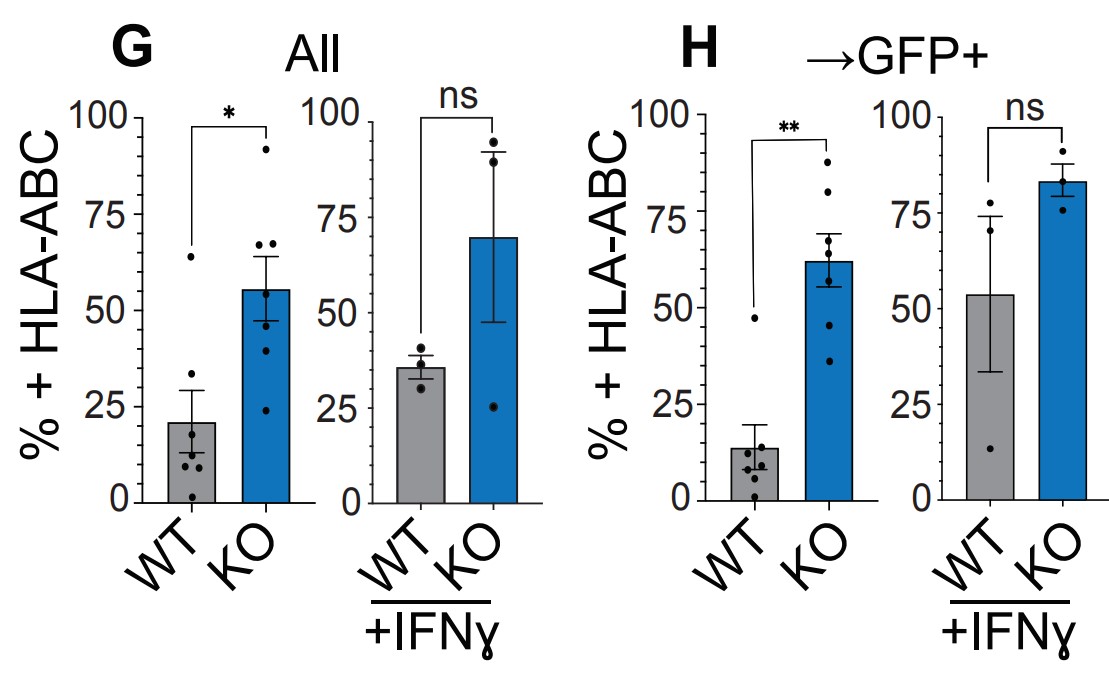
Case study 2: Lu Chen, 2021
Reversible phosphorylation has emerged as an important mechanism for regulating 26S proteasome function in health and disease. Over 100 phospho-tyrosine sites of the human proteasome have been detected, and yet their function and regulation remain poorly understood. Here the researchers show that the 19S subunit Rpt2 is phosphorylated at Tyr439, a strictly conserved residue within the C-terminal HbYX motif of Rpt2 that is essential for 26S proteasome assembly. Unexpectedly, they found that Y439 phosphorylation depends on Rpt2 membrane localization mediated by its N-myristoylation. Multiple receptors tyrosine kinases can trigger Rpt2-Y439 phosphorylation by activating Src, a N-myristoylated tyrosine kinase. Src directly phosphorylates Rpt2-Y439 in vitro and negatively regulates 26S proteasome activity at cellular membranes, which can be reversed by the membrane-associated isoform of protein tyrosine phosphatase nonreceptor type 2 (PTPN2). In H1975 lung cancer cells with activated Src, blocking Rpt2-Y439 phosphorylation by the Y439F mutation conferred partial resistance to the Src inhibitor saracatinib both in vitro and in a mouse xenograft tumor model, and caused significant changes of cellular responses to saracatinib at the proteome level.
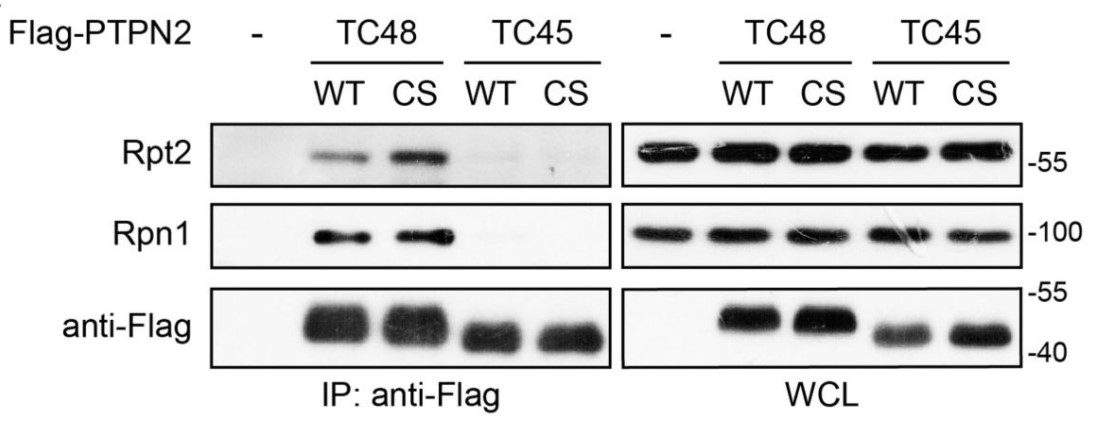
Fig3. Flag-PTPN2 isoforms were expressed in 293T cells. Co-immunoprecipitation of PTPN2 and endogenous proteasome subunits was determined by western blot. CS, C216S.

Quality Guarantee
High Purity
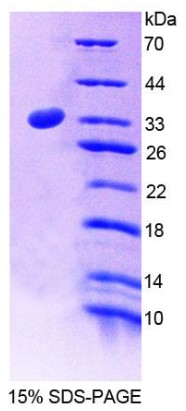
Fig1. SDS-PAGE (PTPN2-8088H) (PROTOCOL for western blot)
.
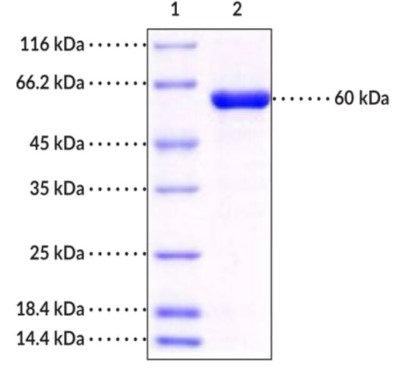
Fig2. SDS-PAGE (PTPN2-144H) (PROTOCOL for western blot)
Involved Pathway
PTPN2 involved in several pathways and played different roles in them. We selected most pathways PTPN2 participated on our site, such as Jak-STAT signaling pathway, which may be useful for your reference. Also, other proteins which involved in the same pathway with PTPN2 were listed below. Creative BioMart supplied nearly all the proteins listed, you can search them on our site.
| Pathway Name | Pathway Related Protein |
|---|---|
| Jak-STAT signaling pathway | IL21R.1,SOCS3,IL15,IL12RB1,PIM1,IL21,GHRA,IFNA6,PIK3R3B,Il23a |
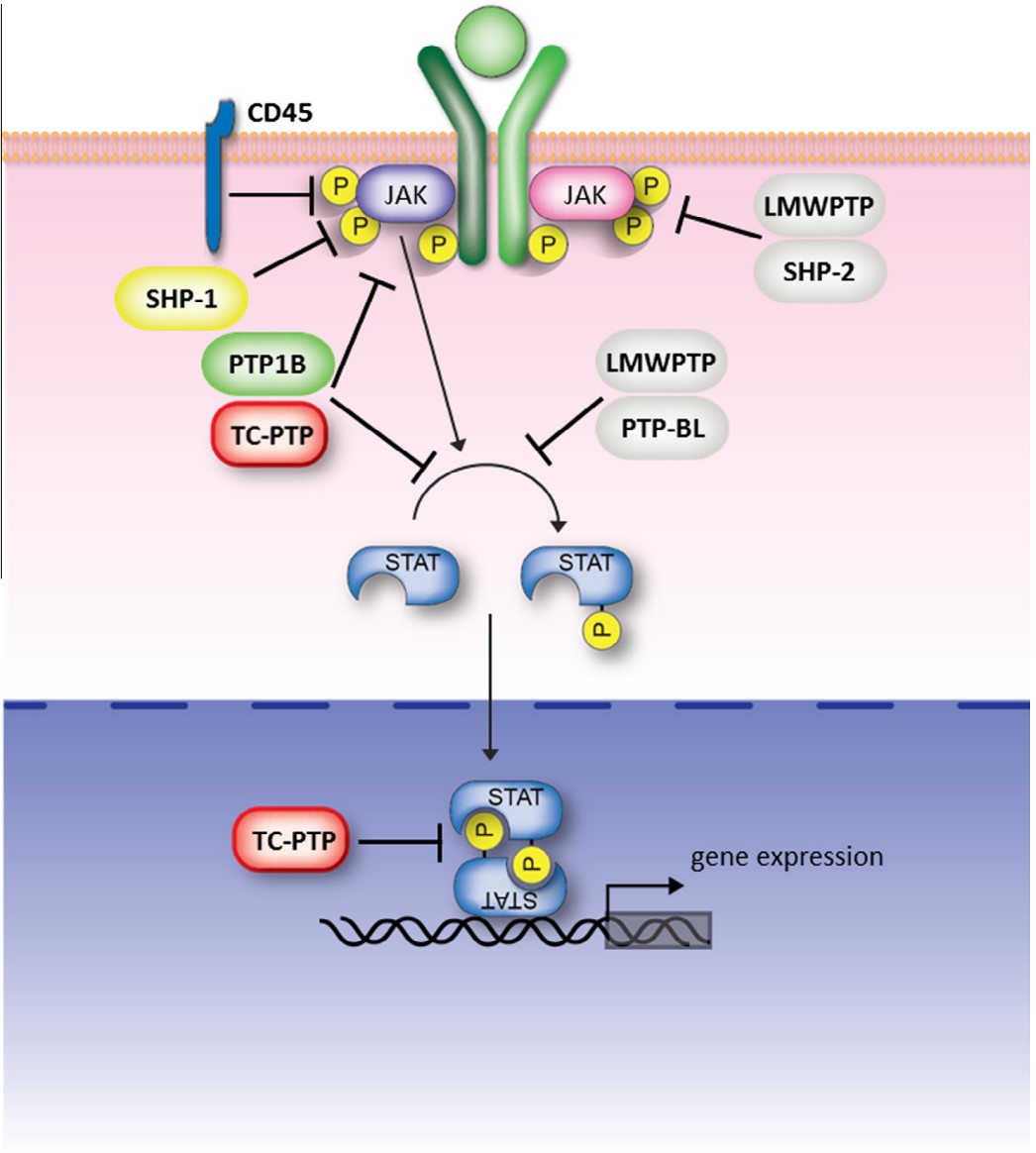
Fig1. Protein tyrosine phosphatases regulate cytokine receptor–JAK–STAT signaling. (Kelly A Pike, 2016)
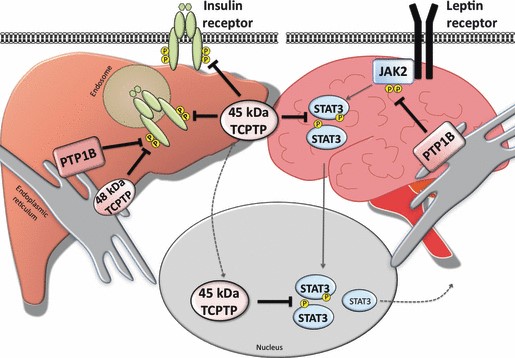
Fig2. PTP1B and TCPTP in insulin and leptin signaling. (Tony Tiganis, 2013)
Protein Function
PTPN2 has several biochemical functions, for example, integrin binding,protein binding,protein kinase binding. Some of the functions are cooperated with other proteins, some of the functions could acted by PTPN2 itself. We selected most functions PTPN2 had, and list some proteins which have the same functions with PTPN2. You can find most of the proteins on our site.
| Function | Related Protein |
|---|---|
| integrin binding | PXN,COL5A1,AMICA1,TIMP2,ADAM23,COL4A3,DST,CTGFB,CALR,NISCH |
| protein binding | USH2A,KLHL35,IGF2BP3,KIAA1530,RWDD3,TIFA,STXBP4,TNFAIP3,GALT,BATF2 |
| protein kinase binding | FBXO5,CD226,SPDYE2,MAPT,SNAP91,CALM2,TBC1D14,HSP90AB1,CCNA2,NPR1 |
| receptor tyrosine kinase binding | FIZ1,ZNF259,NRG1,ZFP259,TP53,PTPN1,PLCG1,ARHGEF16,LRP4,SOCS5 |
| protein tyrosine phosphatase activity | PTPRU,PTPRG,PTPMT1,EVLA,CDKN3,PTPN6,PTPRO,PTPREB,DUSP22,RNGTT |
| syntaxin binding | SYT15,STXBP5L,SNAP23.2,NAPGA,CPLX3,VPS54,RPH3A,SYT13,SYT11B,CPLX4A |
Interacting Protein
PTPN2 has direct interactions with proteins and molecules. Those interactions were detected by several methods such as yeast two hybrid, co-IP, pull-down and so on. We selected proteins and molecules interacted with PTPN2 here. Most of them are supplied by our site. Hope this information will be useful for your research of PTPN2.
GHR;ITGA1;WASL;CDC42;INSR;SFN;UCHL5;q5ni33_fratt;PSMC1;EGFR
Resources
Research Area
Related Services
Related Products
References
- Ciccacci, C; Perricone, C; et al. A Multilocus Genetic Study in a Cohort of Italian SLE Patients Confirms the Association with STAT4 Gene and Describes a New Association with HCP5 Gene. PLOS ONE 9:-(2014).
- Li, HJ; Spagnol, G; et al. TC-PTP directly interacts with connexin43 to regulate gap junction intercellular communication. JOURNAL OF CELL SCIENCE 127:3269-3279(2014).



